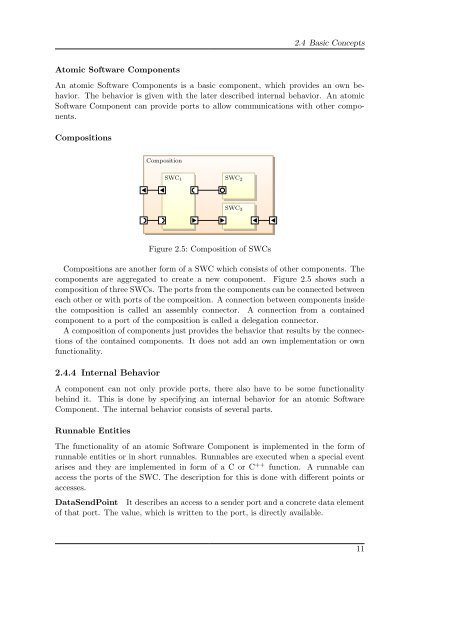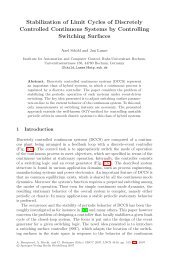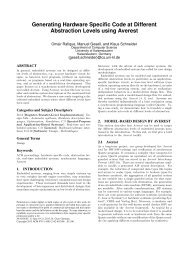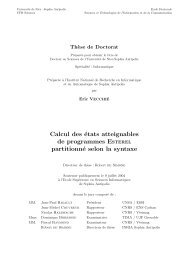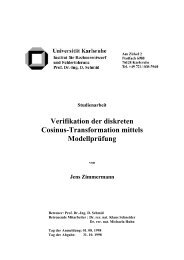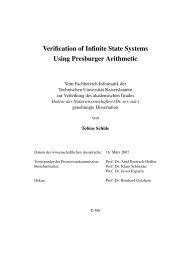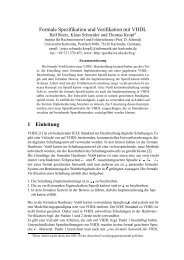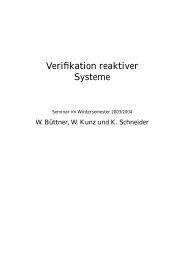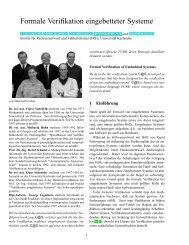Evaluation Environment for AUTOSAR-Autocode in Motor Control ...
Evaluation Environment for AUTOSAR-Autocode in Motor Control ...
Evaluation Environment for AUTOSAR-Autocode in Motor Control ...
Create successful ePaper yourself
Turn your PDF publications into a flip-book with our unique Google optimized e-Paper software.
Atomic Software Components<br />
2.4 Basic Concepts<br />
An atomic Software Components is a basic component, which provides an own behavior.<br />
The behavior is given with the later described <strong>in</strong>ternal behavior. An atomic<br />
Software Component can provide ports to allow communications with other components.<br />
Compositions<br />
Composition<br />
SWC1<br />
SWC2<br />
SWC3<br />
Figure 2.5: Composition of SWCs<br />
Compositions are another <strong>for</strong>m of a SWC which consists of other components. The<br />
components are aggregated to create a new component. Figure 2.5 shows such a<br />
composition of three SWCs. The ports from the components can be connected between<br />
each other or with ports of the composition. A connection between components <strong>in</strong>side<br />
the composition is called an assembly connector. A connection from a conta<strong>in</strong>ed<br />
component to a port of the composition is called a delegation connector.<br />
A composition of components just provides the behavior that results by the connections<br />
of the conta<strong>in</strong>ed components. It does not add an own implementation or own<br />
functionality.<br />
2.4.4 Internal Behavior<br />
A component can not only provide ports, there also have to be some functionality<br />
beh<strong>in</strong>d it. This is done by specify<strong>in</strong>g an <strong>in</strong>ternal behavior <strong>for</strong> an atomic Software<br />
Component. The <strong>in</strong>ternal behavior consists of several parts.<br />
Runnable Entities<br />
The functionality of an atomic Software Component is implemented <strong>in</strong> the <strong>for</strong>m of<br />
runnable entities or <strong>in</strong> short runnables. Runnables are executed when a special event<br />
arises and they are implemented <strong>in</strong> <strong>for</strong>m of a C or C ++ function. A runnable can<br />
access the ports of the SWC. The description <strong>for</strong> this is done with different po<strong>in</strong>ts or<br />
accesses.<br />
DataSendPo<strong>in</strong>t It describes an access to a sender port and a concrete data element<br />
of that port. The value, which is written to the port, is directly available.<br />
11


